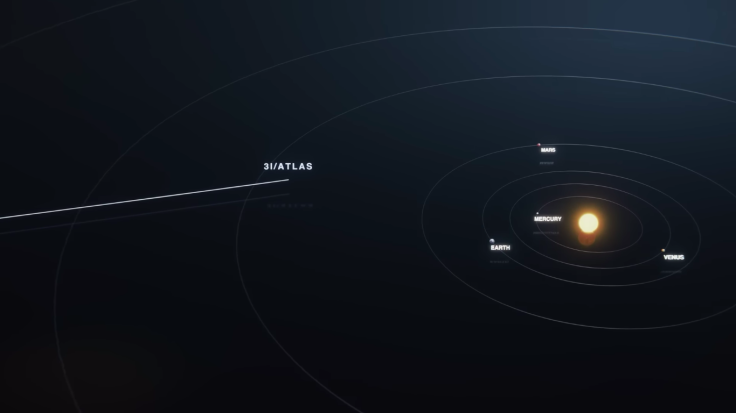3I Atlas News: ESA Spacecraft to Track Rare Interstellar Comet Hidden Behind the Sun

The European Space Agency (ESA) is repurposing its fleet of spacecraft around Mars and the Sun to track 3I/ATLAS, a rare interstellar comet, as it slips out of view from Earth during a three-month solar conjunction.
Astronomers say the object—only the third known interstellar visitor to our Solar System—will remain invisible to ground telescopes from late September until December 2025, making spacecraft observations critical.
What Is Solar Conjunction?
According to NASA, solar conjunction occurs when the Sun blocks Earth's line of sight to an object in space. For 3I/ATLAS, this means its faint glow is completely drowned out by solar glare, halting ground observations. The blackout comes at the comet's most active phase, when volatile ices sublimate and release gas and dust near the Sun.
Mars Orbiters Step In
To bypass this challenge, ESA is tasking Mars Express and the ExoMars Trace Gas Orbiter with observing the comet during its close pass by Mars on 3 October 2025, when it will come within 30 million kilometres of the planet, reported BBC Sky at Night Magazine. Both orbiters will pivot their cameras, usually trained on the Martian surface, towards the faint speck of 3I/ATLAS.
Project scientist Colin Wilson told ESA that the object will probably appear as little more than a dot, but its gaseous halo and dust could be detectable. 'Even if the nucleus is too small to resolve, we can still learn from its coma and tail,' he said.
Solar Observatories Join The Effort
Other spacecraft, including Solar Orbiter and the joint ESA–NASA mission SOHO (Solar and Heliospheric Observatory), will try to capture the comet while monitoring the Sun.
NASA's Parker Solar Probe and STEREO-A may also contribute, leveraging their vantage points away from Earth.
Later in November, ESA's JUICE spacecraft, en route to study Jupiter's icy moons, will attempt observations when the comet passes within 64 million kilometres.
The instruments on board could reveal more about its composition, though ESA has warned that results may take months to analyse.
Why 3I/ATLAS Matters
3I/ATLAS is only the third interstellar object known to cross our Solar System, after 1I/'Oumuamua in 2017 and 2I/Borisov in 2019.
Its hyperbolic orbit confirms that it came from beyond the Sun's gravitational grip, according to Reuters.
Early results from the James Webb Space Telescope suggest it is unusually rich in carbon dioxide compared with water, unlike most comets studied so far, according to arXiv.
Meanwhile, ultraviolet observations from NASA's Swift mission detected water vapour streaming off at a rate of roughly 40 kilograms per second, the report added.
Astronomers are also intrigued by its strange optical behaviour. A study posted on arXiv in September found that 3I/ATLAS reflects light in a way not commonly seen in other comets, hinting that its dust grains may be very different from those found locally.
Controversy And Debate
Not all theories about 3I/ATLAS have been welcome, according to The Guardian.
Harvard astronomer Avi Loeb suggested that the comet's unusual acceleration and mass could point to something 'engineered'. However, NASA dismissed such speculation, stating that normal cometary processes can explain the data.
The debate echoes the storm around 'Oumuamua, which also sparked claims of an artificial origin.
Most scientists, however, remain cautious, stressing that careful observation and modelling are needed before a conclusion can be drawn.
Looking To December
With 3I/ATLAS hidden behind the Sun until December, spacecraft will remain the only eyes on this cosmic visitor. Once it re-emerges, ground telescopes will resume tracking its exit from the Solar System.
As ESA's Colin Wilson concluded: 'This is a once-in-a-lifetime chance. Every piece of data we gather brings us closer to understanding how objects form around other stars—and what happens when they pay us a fleeting visit.'
© Copyright IBTimes 2025. All rights reserved.





















